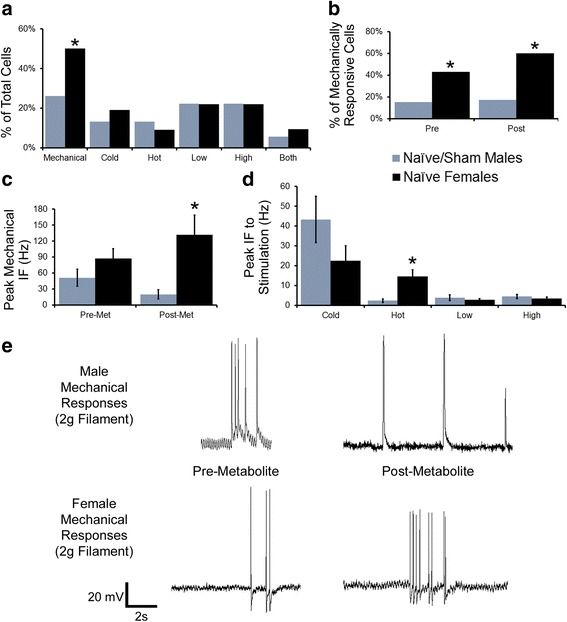Fig. 1.

Response properties and phenotypes of individual muscle afferents in age-matched uninjured males and females. a Phenotype distribution of male (n = 46) and female afferents (n = 50) did not differ for most modalities; however, female muscle afferents were more likely to be mechanically sensitive. b Sex differences in the numbers of mechanoreceptors was observed both prior to and following the application of metabolite solutions, but firing of these afferents to mechanical stimulation only showed a significant increase in firing after metabolite application c. With the exception of post-metabolite mechanical responses and peak heat responses, firing to other stimulus modalities did not differ between males and females (d). Representative traces of pre- and post-metabolite mechanical responses to stimulation with a 2 g von Frey filament (e). Phenotype data is represented as the percentage of cells responsive to a given stimulus over the total tested in a condition, and the corresponding raw frequency data was analyzed with Fisher’s Exact test. Peak IFs are represented by the condition average ± error of the difference in means.*p < .05 vs. other condition
